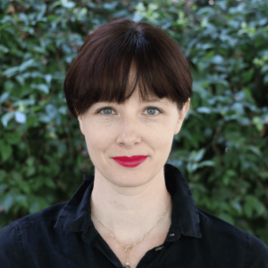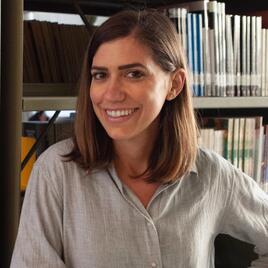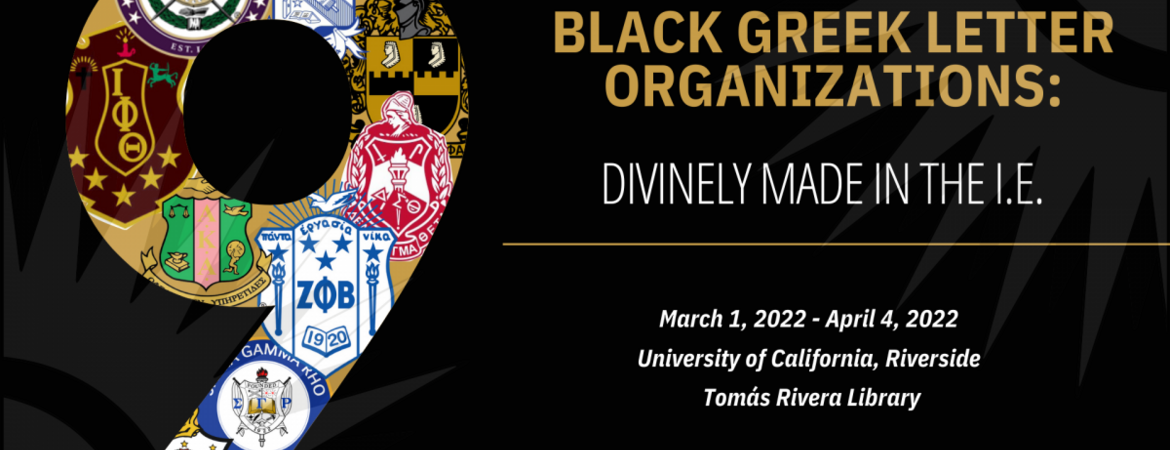Search
Search
Transcriptions make Fujimoto Diaries more accessible
The Fujimoto Transcripts project has made a treasured library resource even more accessible to a global audience.
The diaries of Japanese Americans, Toranosuke (George) Fujimoto and George Fujimoto Jr. constitute one of the most valuable and unique collections housed in the UCR Special Collections & University Archives. Toranosuke, born in 1882, kept a diary from 1913 to 1968. George Jr. wrote in his diary from 1942, when he was 21 years old, to 1948. These astonishing materials document the daily life experiences of both the father and the son during World War II, when the family was forcibly removed from their Riverside, California home and taken to an incarceration camp in Poston, Arizona.
The opening entry in George Jr.’s diary, date March 11, 1942, documents his return from school to find that his father and others had been arrested and taken away:
“Went to school as usual… Came home about 5PM and was shocked to learn that Pop was taken into custody today by federal officials. 28 Riverside Japanese aliens were rounded up in today's raid; Mr. Sanematsu & Pop included. Fortunately Pop was partially prepared.”
According to Cherry Williams, Director of Distinctive Collections, some readers have had trouble accessing and using the digitized diaries because the readers were unfamiliar with cursive script, or because they lacked fluency with the English language and sentence structure, or due to challenges with reading the soft color of the ink, among others.
“The Fujimoto transcription project sought to alleviate such impediments by enhancing, expanding, and facilitating the ease with which these important and distinctive documents can be used and re-used by the general public, research scholars, students and any others interested in this period in Riverside County and The Inland Empire during WWII,” Williams explained.
The UCR Library recognizes and extends its deep appreciation to the committed librarians and library staff who dedicated months of work creating the transcriptions, which are now available on the Calisphere website: Diary of George Fujimoto Jr. (1942) — Calisphere
At present, only the diaries of George Fujimoto Jr. have been transcribed.
Special Collections Reading Room
Type
- Individual Study
- Quiet Space
Capacity
- Up to 10 people
This reading room is the public access point for all collections housed in Special Collections & University Archives. Tables are reserved for up to 10 registered users to consult Special Collections materials, and computers are reserved for Special Collections research. Additional visitors are welcome as the large reading room also features public exhibitions and an information desk.
Christina Bean
Christina is responsible for the preventive care and conservation treatment of flat paper items, bound materials, manuscripts, three-dimensional objects, photographs, paintings, textiles and other woven objects that are included in the general circulating collections as well as in the Special Collections & University Archives collections.
Conservator

New archival collections available for fall quarter 2017
Special Collections & University Archives staff are constantly working to process recently acquired collections and make those materials ready for use by students, faculty, and researchers.
Each quarter, we will provide a list of UCR Library's newly processed archival and primary source collections. Check out the list below to see if there are any items that fit your research area, or share with a friend!
Below you'll find brief descriptions and links to the finding aids or collection guides for each new collection. To use any of these materials, simply click the "Request Items" button at the top to submit a request, and log in with our Special Collections Request System. For more on conducting research in Special Collections, see this page.
SCUA is open to the public on weekdays from 11:00 am – 4:00 pm. Check here for closures or other changes to our regular hours.
For questions, email specialcollections@ucr.edu.
Newly Processed Collections – Fall 2017
1.92 linear ft. (2 boxes)
The collection contains photographs, notes, articles, and other materials from explorer Edna R. Webster and her daughter Marjorie Webster. The majority of materials in the collection relate to Edna's exploration and study of Mayan ruins on the Yucatán Peninsula in Mexico, and Marjorie's interest in Atlantis and its possible connection to Mexico.
2.54 linear ft. (5 boxes)
This collection consists of the papers of author Jean Paiva, including manuscript drafts, notes, research, and short stories. Materials in the collection also include literary contracts, earnings statements, and correspondence between Paiva and other authors, editors and literary figures.
0.83 linear ft. (2 boxes)
The collection consists of materials relating to the political career of John Phillips, who served as a California state legislator from 1932-1942, then as a member of the House of Representatives from 1943-1947. Items in the collection include correspondence, reports, pamphlets, and other documents related to Phillips work and research on topics like government food subsidies, universal military training, and the Republican Party platform.
1.42 linear ft. (2 boxes)
The Sunkist Growers Inc. records consists mostly of agreements between various growers and the Fruit Growers Supply Company and the Exchange By-Products Company, which were parts of the organization that provided wholesale supplies and developed markets for citrus by-products like oil and citric acid. The collection also includes brochures, photographs, and a photo album including research information from the University of California Citrus Experiment Station.
1.46 linear ft. (2 boxes)
This collection consists of the personal and professional papers of Betty Clark Moore, a biologist and former research associate at UC Riverside. Materials in the collection include correspondence, photographs, research notes, and scientific publications written by Moore and others.
11.5 linear ft. (20 boxes)
This collection contains correspondence, notes, and other material from J. Lloyd Eaton, a physician and book collector whose collection of science fiction, fantasy, and horror publications formed the foundation of the Eaton Science Fiction & Fantasy Collection at UC Riverside. Included in his papers are the index card catalogs Eaton kept documenting his collection, which include his notes on many of the works.
0.42 linear ft. (1 box)
This collection consists of photographs and postcards from John W. Dady, depicting various Native American tribes and ranches in the Midwest and California during the early 20th century.
0.23 linear ft. (1 box, 1 flat folder)
This collection contains photographs, slides, and programs from races held at the Riverside International Raceway, a race track in Riverside, California that was in operation from 1957-1989.
1.25 linear ft. (2 boxes)
The collection contains two scrapbooks of news clippings, correspondence, political mailers, and other materials related to efforts to pass two ballot propositions related to state bonds in the June 2, 1970 election in California.
7.19 linear ft. (6 boxes, 1 flat folder)
This collection contains records and research on the date palm industry and date palm farming throughout the 20th century, including photographs of date palm farms, brochures, and newspaper clippings. Additionally, the collection contains photographs, programs, correspondence, and pamphlets pertaining to the United States Department of Agriculture Date Station, and items from date palm researchers Walter T. Swingle, and Roy W. Nixon.
2.17 linear ft. (4 boxes)
This collection includes materials from Alfred M. Boyce, an entomologist and first dean of the University of California, Riverside's College of Agriculture. Items in the collection include agricultural research, photographs, information on the Citrus Experiment Station, and materials related to the publication of Boyce's memoir, Odyssey of an Entomologist: Adventures on the Farm, at Sea, and in the University.
0.42 linear ft. (1 box)
The collection contains working papers, articles, proposals, and other documents on solar sails created by Carl A. Wiley, an engineer and mathematician that authored one of the first accounts of how solar sails could be assembled in orbit and used as spacecraft propulsion devices.
0.21 linear ft. (1 box)
This collection contains correspondence from numerous British artists during the 19th and early 20th century received and collected by British painter Edith Hipkins. The majority of the correspondence consists of personal letters sent to Hipkins and her father, musician Alfred J. Hipkins.
Robin Katz
Robin's key responsibility is to foster primary source literacy for a wide range of audiences. She holds a BA in English & American Literature and European Cultural Studies from Brandeis University and an MLIS with concentration in archives and special collections from Kent State University. Robin joined the library in 2015.
Arts and Humanities Teaching Librarian

Eaton Collection of Science Fiction and Fantasy
The Eaton Collection of Science Fiction & Fantasy is one of the world's largest, richest, and deepest collections of science fiction, fantasy, horror, utopian literature and related genres. The collection originated with the personal library of Dr. J. Lloyd Eaton, consisting of about 7,500 hardback editions of science fiction, fantasy and horror from the Nineteenth to the mid-Twentieth centuries, which was acquired by the UCR Library in 1969.
Course-Related Instruction
In collaboration with course instructors, librarians in the Teaching & Learning Department at the UCR Library tailor library instruction sessions to best meet the research and information needs of students for specific courses.
Through library instruction sessions, students are introduced to a variety of information sources, effective strategies for conducting research, and the ethical use of information.
Orange Roots Exhibition to Celebrate Riverside’s Citrus Heritage
UCR Library will open a new exhibition on Monday, Oct. 24, titled, “Orange Roots: The Remarkable Story of Two Trees, a Pioneer Town, and the University of California, Riverside.”
The exhibition will be located at the Tomás Rivera Library, and will be on display through June 2017.
A welcome reception in honor of the exhibition’s opening will be held on Thursday Nov. 10 at the Tomás Rivera Library, from 2-4 p.m. The event is free and open to the public. The reception will include a talk by Susan Straight, professor of creative writing at UCR, and a citrus-tasting station where guests can sample different varieties of citrus fruits. The citrus-tasting station will be organized by Tracy Kahn, UCR’s Givaudan Citrus Variety Collection Endowed Chair. Free parking will be available - those interested in attending should email Carole Meyer-Reith at carolem@ucr.edu.
“‘Orange Roots’ brings to life the exciting history of Riverside, and how the Washington Navel orange tree revolutionized citrus,” states Krista Ivy, UC Riverside librarian and curator of the exhibit.
The “Orange Roots” exhibition will showcase the remarkable history of Riverside’s citrus heritage. It will feature photographs, historical documents, and ephemera from the UCR Library Special Collections & University Archives, the UCR Citrus Variety Collection, the UCR Department of Biological Sciences, the Riverside Metropolitan Museum, and the Riverside Public Library.
“Orange Roots” will present the rich tale of Riverside’s citrus heritage from its early pioneer days, to the establishment of UCR.
“Notable pioneers such as Eliza Tibbets and Matthew Gage, along with the labor and expertise of various immigrant groups and Native Americans, launched Riverside into the national spotlight in the late 19th Century,” Ivy explains. They helped to transform the dry landscape of Riverside into lush citrus groves. “Riverside’s international role and importance in citriculture would continue to grow with the establishment of the Citrus Experiment Station and later the University of California, Riverside.”
Mark’s Path to Digitization

Mark Buchholz has served as the Digitization Services Specialist at the UCR Library since February 2022.
As the UCR Library's Digitization Services Specialist, Mark focuses on expanding the library’s digital collections by digitizing and preserving research materials and building the library’s digitization capacity for the future.
Mark’s journey into the world of libraries began unexpectedly during his freshman year of high school. A community service requirement led him to volunteer at his local library, where he was tasked with applying barcodes and spine labels to books. At the time, Mark found the work tedious. “I didn’t have any interest in working in libraries then,” Mark recalls. It wasn’t until much later that he would recognize the importance of that early experience.
Mark’s library career began in 2005 at the University of Miami Library, where he worked on a grant-based project to digitize the slide libraries of the Art History and Architecture Departments. “It was a good opportunity to learn,” Mark reflects, noting how digitizing thousands of images sparked an interest in art history. After the grant ended, Mark continued working for UM Libraries for another eight years, digitizing library materials from Special Collections, University Archives, and the Cuban Heritage Collection.
His work at the University of Miami eventually led him to the Claremont Colleges and, later, to the UCR Library. “I wanted to grow personally and professionally,” Mark explains on his move to UCR.
At the UCR Library, Mark has been involved in several significant projects, including the digitization of the Nuestra Cosa newspaper archive, which he found particularly rewarding. “The process of digitizing a multilingual newspaper introduces interesting challenges,” he explains, highlighting the complexities of optical character recognition and metadata description in multiple languages.
Mark is also excited about his upcoming move from the Orbach Library to a new digitization lab located in the Tomás Rivera Library. The new, purpose-built space will improve the safety and efficiency of the digitization process, allowing materials to stay in the same building and reducing risks associated with transportation. “It’s safer and better for the materials,” Mark states.
Mark has become an integral part of the UCR Library’s efforts to preserve and share our unique collections. His commitment to digitization ensures that valuable materials are not only safeguarded but also made accessible to future generations. You can view the UCR Library’s digital collections, which includes material that Mark and his team have digitized, on Calisphere.
Black Greek Letter Organizations: Divinely Made in the I.E.

The Black Greek Letter Organizations: Divinely Made in the I.E. exhibition chronicles the collective history of nine Black Greek Letter organizations (BGLOs) at the University of California, Riverside, and beyond.
These BGLOs, affectionately known as the “Divine Nine,” are the following sororities and fraternities:
- Alpha Phi Alpha Fraternity, Inc.
- Alpha Kappa Alpha Sorority, Inc.
- Kappa Alpha Psi Fraternity, Inc.
- Omega Phi Psi Fraternity, Inc.
- Delta Sigma Theta Sorority, Inc.
- Phi Beta Sigma Fraternity, Inc.
- Zeta Phi Beta Sorority, Inc.
- Sigma Gamma Rho Sorority, Inc.
- Iota Phi Theta Fraternity, Inc.
The exhibition material, gleaned from members and available archival materials, explores several key components of BGLOs, including fellowship, service, philanthropy, and scholarship, among other topics.
Over the last five decades, BGLOs have graced the UCR campus. The first BGLO at UCR was Kappa Alpha Psi Fraternity Inc., Eta Zeta chapter, chartered on March 22, 1974. Since then, all nine organizations have had a presence on UCR’s campus and a tremendous impact in the Inland Empire that spans over 70 years.
The Black Greek Letter Organizations: Divinely Made in the I.E. exhibition is a collaboration between the UCR African Student Programs (ASP) and the UCR Library. The exhibition will run from March 1 - April 4 and can be viewed on the fourth floor of the Rivera Library in the Special Collections and University Archives section.
View the exhibition Monday - Friday, 10 a.m. - 4 p.m.